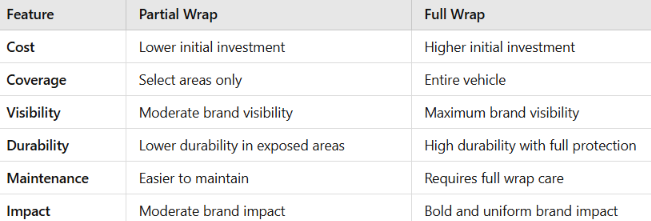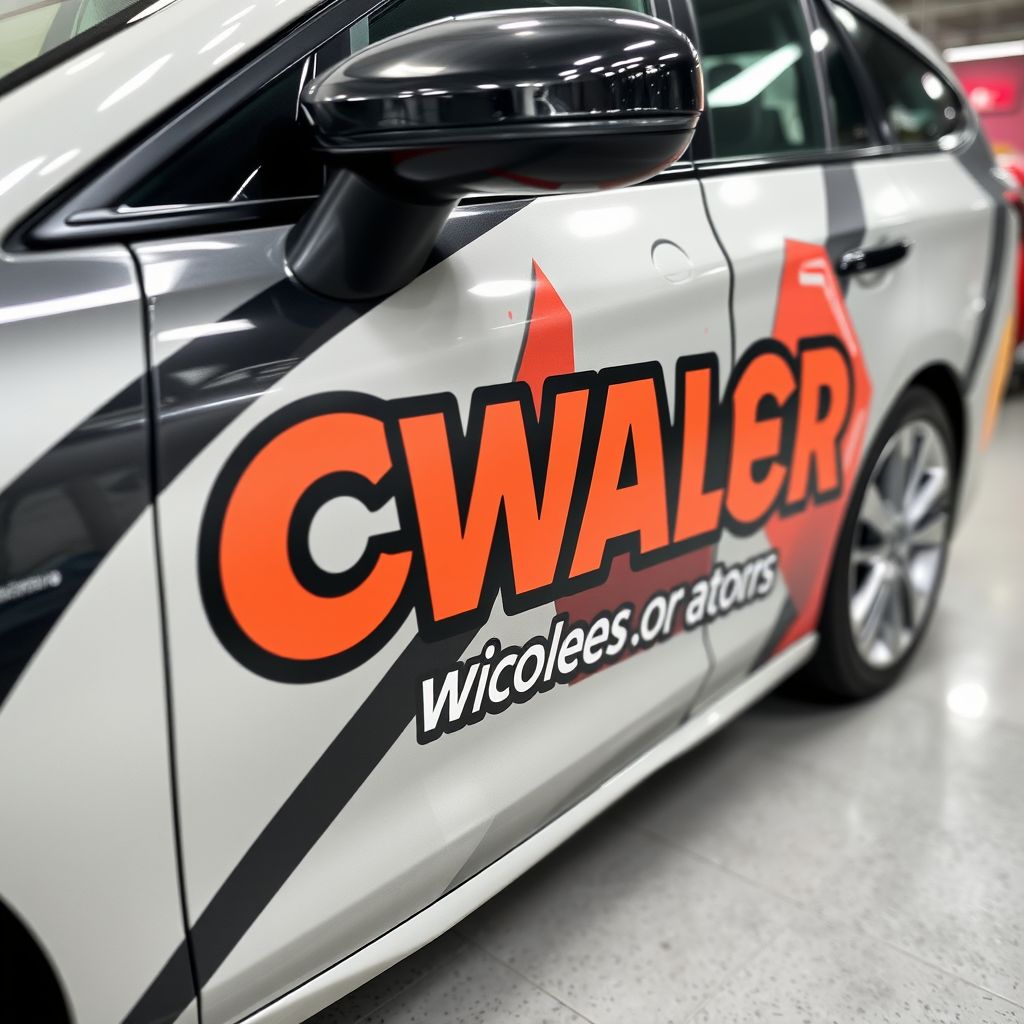Vehicle wraps can effectively turn cars, vans, or trucks into engaging mobile advertisements. Whether promoting a single vehicle or an entire fleet, wraps provide businesses with exceptional visibility. Deciding between a partial vehicle wrap and a full vehicle wrap, however, depends on various factors. This guide delves into the differences, benefits, and considerations to help you make the right choice.
Understanding Partial Vehicle Wraps
Partial vehicle wraps cover specific sections of a vehicle, such as doors, rear panels, or windows. Instead of covering the entire vehicle, partial wraps strategically focus on high-impact areas to achieve branding goals cost-effectively.
Key Features:
-
Emphasizes selected parts of the vehicle.
-
Seamlessly blends with the vehicle’s original paint for a polished look.
-
Suitable for smaller budgets or short-term campaigns.
Ideal For:
-
Small businesses seeking affordable marketing solutions.
-
Seasonal or temporary promotions.
-
Vehicles with limited branding space.
Partial wraps deliver excellent value for money while maintaining brand visibility, but they may not offer the bold consistency of full wraps.
Exploring Full Vehicle Wraps
Full vehicle wraps envelop the entire exterior of a vehicle, including doors, roof, windows, and bumpers. This approach ensures a cohesive and professional aesthetic, ideal for creating detailed and uniform branding.
Key Features:
-
Covers the entire vehicle exterior.
-
Supports intricate graphics and vibrant visuals.
-
Adds an extra layer of protection to the vehicle’s paintwork.
Ideal For:
-
Businesses wanting maximum visual impact.
-
Companies managing fleets that require consistent branding.
-
Long-term advertising initiatives.
Full wraps act as mobile billboards, enhancing brand exposure wherever the vehicle travels. However, they come with higher costs and longer installation times.
Pros and Cons: Partial vs. Full Vehicle Wraps

Both options have their strengths. Choosing the right one depends on your specific goals and resources.
Factors to Consider When Choosing a Wrap
-
Budget:
-
Partial wraps are cost-effective and ideal for businesses with limited funds. Full wraps involve a larger investment but provide extensive visibility and durability.
-
-
Marketing Goals:
-
Choose a full wrap for maximum brand impact and consistency. Opt for a partial wrap for targeted, localized campaigns or short-term advertising needs.
-
-
Vehicle Usage:
-
Vehicles that frequently travel highways or high-traffic areas gain more visibility with full wraps. For local deliveries, partial wraps can be just as effective.
-
-
Design Requirements:
-
Full wraps allow for detailed, cohesive designs. Partial wraps work best when integrated creatively with the vehicle’s base color.
-
Real-World Applications
-
Local Food Truck: A partial wrap successfully showcased the brand’s logo and contact details, capturing local attention.
-
Delivery Fleet: A full wrap ensured uniform branding across several vehicles, creating a professional and memorable impression.
Final Thoughts
Both partial and full vehicle wraps offer unique advantages. Partial wraps are an economical choice for focused advertising, while full wraps maximize exposure with an all-encompassing design. When deciding, consider your business goals, budget, and desired level of visibility.
Speak With Us
At TheWrap.Zone, we’re ready to help you transform your vehicles into standout marketing tools. Whether you’re exploring partial wraps or full wraps, our team will work with you to find the best solution tailored to your business needs
Get a Free Vehicle Wrap Consultation Today!
Whether you choose a partial wrap or a full wrap, TheWrap.Zone is here to help you every step of the way.

